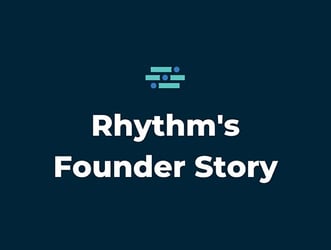Managing the Total Cost of Ownership (TCO) for your association's tech stack is crucial for both the sustainability of your association’s budget and the efficiency of your staff. Many associations juggle multiple software solutions, each with its costs and complexities. A lot of associations we talk to have some software solutions that only one or two staff members use, or worse, no one uses them. While there’s probably not one all-encompassing software solution out there that everything can be brought into, chances are you might have more than you need due to unintuitive processes or complicated solutions.
While more and more software solutions pop up every day, it is possible to significantly reduce your cost of ownership. In the association space specifically, you might be able to pull more functionality into your Association Management Software (AMS) through the core product or with best-in-breed integrations, giving you a holistic solution while reducing your total software costs.
Before diving into the benefits of an AMS, let's first understand what TCO entails. TCO includes both direct and indirect costs associated with your tech stack. This encompasses everything from software licenses and maintenance to training, support, upgrade expenses, and customizations. Evaluating TCO is essential because it gives a more accurate picture of the financial impact of your technology investments, beyond just the initial purchase price.
The Power of Consolidation
An AMS is designed to handle a variety of tasks within a single platform. From membership management and event coordination to financial tracking and communication, a robust AMS integrates these functions seamlessly. By consolidating multiple tools into one system through core products and integrations, associations can streamline their operations, reduce redundancy, and ultimately lower costs.
If you are currently outsourcing to other software solutions for tasks that you should be able to complete in your AMS (like event registration, abstract management, certification tracking, or more) it might be time to evaluate new options. Although it seems like an expensive process to switch to a new AMS, you’d be surprised to learn there are often cost savings in the long run, especially if the new AMS can handle more of your programs out-of-the-box.
While your AMS should be your source of truth for most association programs and processes, you still have to outsource solutions like your content management system, email marketing, learning management systems to host actual courses and exams, and your financial management system. While some AMS providers have the above functionalities in their systems, make sure to get thorough demonstrations to ensure that they will meet your association’s needs. Often, because these features are outside the traditional scope of an AMS, they may lack key functionalities that specialized providers offer.
Assessing Your Current Tech Stack
To understand the potential savings, start by conducting a thorough audit of your current tech stack. Identify all the software programs in use, and analyze their usage patterns. Determine which tools are essential and which are redundant. Compare the capabilities of your existing tools with those that you would bring into your AMS in a perfect scenario. There are often processes you should be able to do in your current AMS, but you have had to outsource due to limits to the system or outdated technology.
This comparison will highlight the areas where consolidation can lead to significant cost reductions.
Consider Hidden Costs
Consider the hidden costs that have popped up throughout the lifecycle of your engagement with your current AMS or other software vendors. Were there unexpected expenses like customizations, forced upgrades, or additional user licenses?
With modern and intuitive AMS solutions, you shouldn’t have to rely on customizations to change the look and feel of your processes. They should be treated as rare, one-off engagements. Upgrades should be a thing of the past as well with everyone on the same version, with updates and new enhancements being added in the background without extra costs or downtime.
A comprehensive AMS is designed to grow with your association. As your needs evolve, you can easily scale the system by adding or removing features or integrations. Configuration options allow you to tailor the AMS to fit your specific requirements, ensuring that you get the most out of the system.
Monitoring and Continuous Improvement
Establish Key Performance Indicators (KPIs) to measure the efficiency and cost-effectiveness of the AMS. Regularly review and update your tech strategy based on these performance metrics. You should have a dedicated customer support manager who will help your team stay informed about new features in the AMS to continuously leverage additional capabilities.
Reducing the TCO for your association's tech stack is not just about cutting costs; it's about enhancing efficiency and delivering better value to your members. By consolidating multiple tools into a single, comprehensive AMS, you can achieve significant cost savings and streamline your operations.







